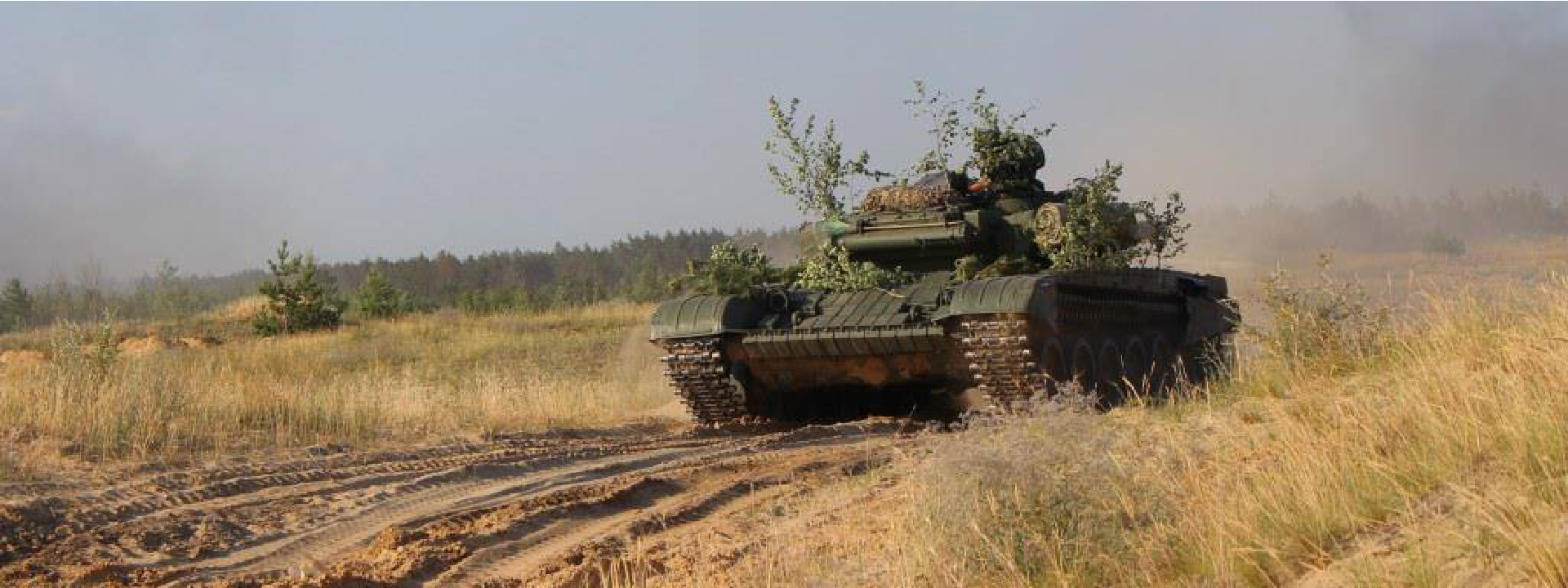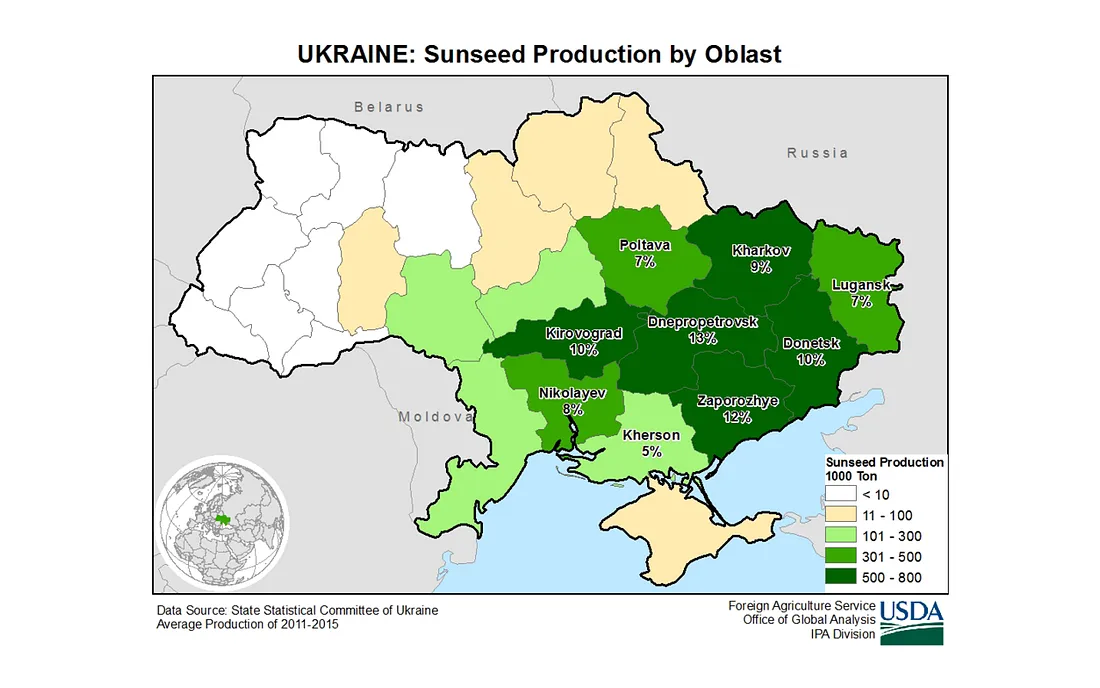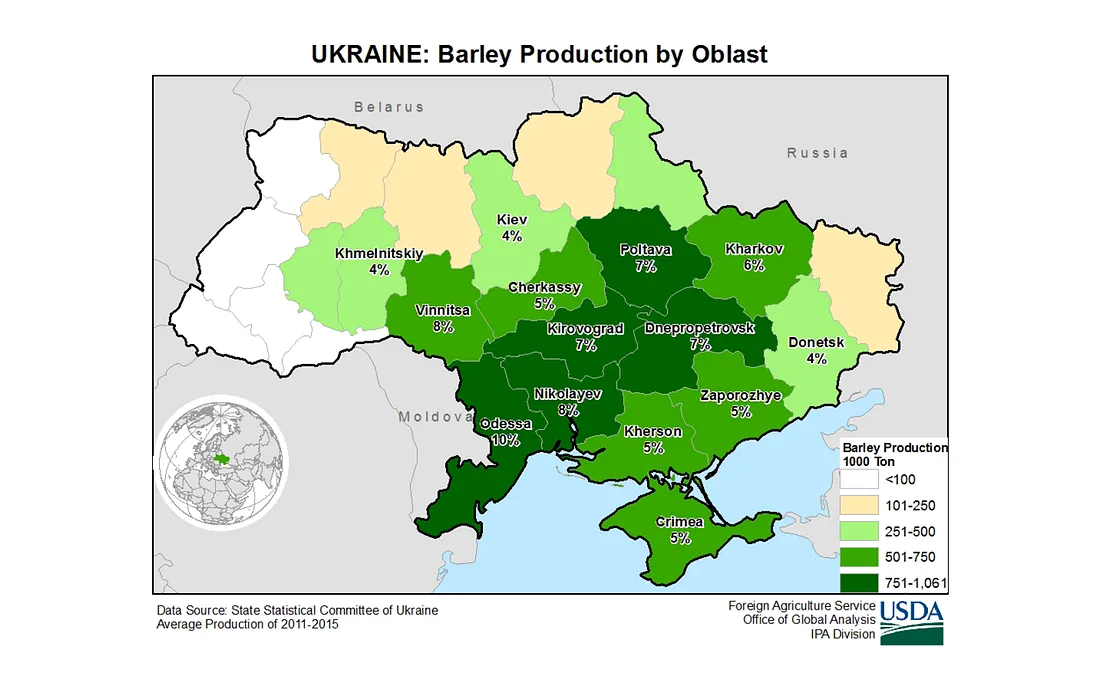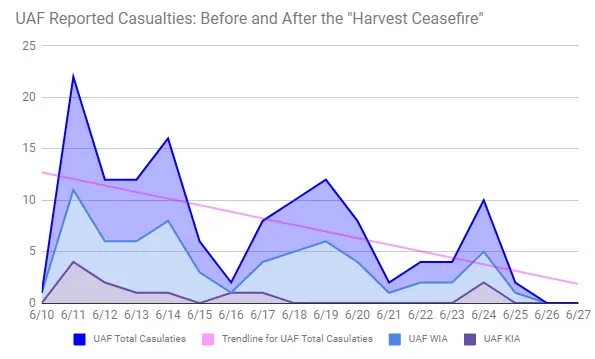
BANNER: Source: Facebook / General Staff of the Armed Forces of Ukraine
After the Trilateral Contact Group (TCG) meeting on June 21, Ambassador Martin Sajdik, who respresents the Organization for Security and Co-operation (OSCE) at the TCG, announced a “harvest ceasefire” between the parties of the conflict. This agreement entailed a “complete cessation of fire along the entire line of contact” from June 24 through August 31, 2017, in attempts to allow for a safe and secure summer harvest. Despite the agreement, fighting has continued, though at a reduced rate.
Why during harvest?
Ukraine has a substantial agricultural sector, historically serving as a major food supplier by exporting grain and dairy products. Thousands of farms in the conflict zone in both the Donetsk and Luhansk Oblasts have been negatively impacted by the conflict. After the beginning of the conflict, farms lost access to domestic and international consumer markets, forcing them to downsize and putting them in direct competition with farms in regions of Ukraine unaffected by the conflict. Farmers have also lost normal supply channel lines, which disrupts access to seeds, fertilizers, insecticides, and more. As the war rages on, land degradation and erosion increase in severity, irrigation infrastructure goes unmaintained, and mines, unexploded ordnances (UXO), and other explosive remnants of war (ERW) pollute the land. In previous harvests, there were unsubstantiated reports of grain silos catching fire after allegedly being hit by crossfire.



At the beginning of the conflict in 2014, former Ukrainian Prime Minister Arseniy Yatsenyuk stated that Ukraine could lose some 15 percent of its grain crop due to the fighting. Before the conflict, Donetsk and Luhansk Oblasts harvested approximately 3.5 million tonnes of grain in 2013. At the start of the war Donetsk and Luhansk Oblasts harvested 2.9 million tonnes of grain from January-August 2014. Overall, this comprises a small part of Ukraine’s larger country-wide agricultural industry, but it still impacts the overall economic situation of the country. Over the past three years, Ukraine’s grain production has steadily decreased, though environmental and economic factors need to be taken into consideration.

Who has ceased fire?
At the beginning of the ceasefire, the OSCE Special Monitoring Mission (SMM) to Ukraine recorded a relative decrease of ceasefire violations with only 63 explosions from June 23–24 and 20 explosions from June 24–25. Comparatively, from June 22–23, the SMM recorded 215 explosions. There was an average of 362 explosions per day in the two weeks before the ceasefire. Note, these numbers reflect the still restricted OSCE SMM movements in the conflict zone after the April 23 security incident and security risks to the mission have increased in frequency.


On the first day of the ceasefire, the UAF Anti-Terrorist Operation (ATO) Press Center reported several attacks onto their positions leaving two killed in action and one wounded. Since the ceasefire began, the ATO Press Center has reported less incidents with heavy weapons banned by the Minsk Agreements.
Both the so-called Luhansk People’s Republic (LNR) and the so-called Donetsk People’s Republic (DNR) have made statements accusing Ukraine of violating the “harvest ceasefire.” On June 26, Deputy Defense Minister and spokesperson for the so-called DNR Eduard Basurin stated that, in violation of the ceasefire, the UAF used 82mm and 120mm mortars in Donetsk. An LNR spokesperson reported twelve UAF ceasefire violations onto LNR positions on June 24, the first day of the ceasefire.
Since ceasefire began, fighting has deescalated in comparison to levels in recent months. Decreased fighting increases the environment for a safe and secure summer harvest, but the fighting still has not stopped and mines, UXO, and ERW are still in the area, posing a very real threat to the farmers in the conflict zone. However, the harvest ceasefire will likely only be a brief respit, as violence in the aftermath of several similar ceasefires — like the back to school ceasefires, Easter silences, and holiday ceasefires—escalated to previous levels of violence.

